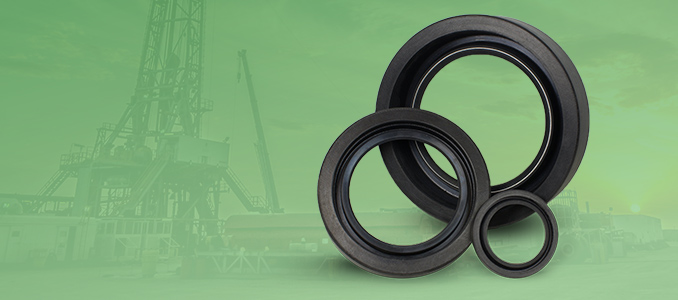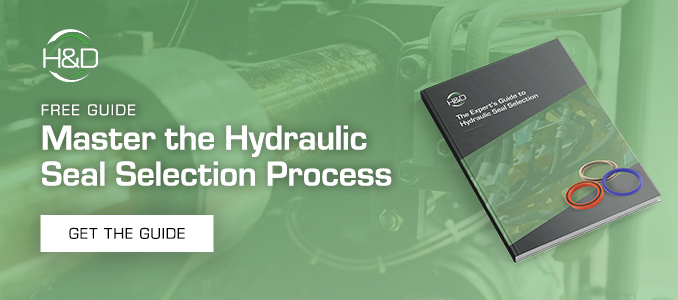by Kyle Silber
Oil and gas seals present some unique challenges. Knowing the operating pressure, temperature, speed, and media are all critical when either designing or matching a homogenous rubber or a rubber and fabric seal for your application. Understanding the pros and cons for each material option will help you choose an oil and gas seal that is not only effective operationally, but cost effective as well.
Chief Considerations for Homogeneous Rubber Oil & Gas Seals
Once you have determined a homogeneous rubber seal is the way to go, there are various types of rubber to choose from, each performing best under different parameters. The most common rubbers used in the oil and gas industry are NBR, HNBR, FKM and FEPM.
NBR
NBR is a common material used in sealing. It operates best in lower-temperature environments, ranging from –35° to 230°F. Another important thing to know about NBR is that it cannot withstand sour gas, so if that is a part of your application, NBR would not be a good choice.
HNBR
Another common rubber sealing material in the oil and gas industry is HNBR. It can tolerate higher temperatures than NBR (from –30° to 300°F) and is able to withstand sour gas, which makes it a material of choice in many oil and gas sealing applications.
FKM
In high-temperature sealing applications, FKM is often considered. However, much like NBR, FKM is not able to withstand sour gas.
FEPM
Another high-temperature alternative is FEPM. In addition to managing operating temperatures over 300°F, it is able to withstand sour gas. It is the most expensive option for rubber oil and gas seals.
Chief Considerations for Rubber & Fabric Oil & Gas Seals
A rubber and fabric seal is often the seal of choice when working with highly abrasive media because the fabric provides the seal with internal support. Many oil and gas applications require that a seal perform well in highly abrasive situations because of varying environmental debris. The three most common fabrics used for oil and gas seals are cotton, synthetic, and aramid fibers.
Cotton
Of all the fabric options for oil and gas seals, cotton is the weakest and operates at the lowest pressure rating with the least abrasion resistance. While it can operate in high temperatures, dry heat can cause deterioration.
Synthetic
The family of synthetic fabrics includes Nylon, Polyester, and Rayon. These materials serve well in mid-range pressure and abrasion applications.
Aramid Fibers
Finally, aramid fibers are used in the most extreme oil and gas conditions. While they are able to perform well in high-pressure and abrasive applications, these fabrics are also the most expensive.
Talk to the Experts About Your Oil & Gas Sealing Needs
Even with this level of understanding about the different options for oil and gas sealing materials, it can be difficult to determine the most cost-effective choice for your specific oil and gas seals. That is why H&D has a team of skilled engineering professionals ready to help walk you through the process. Contact us today to get started!
About H&D Distributors
For over 40 years, H&D Distributors has provided expert sealing solutions for OEM and MRO customers in various industries where productivity is key, including hydraulics, oil and gas, and semiconductor. Leveraging in-house engineering and testing expertise, exceptional customer service, and a global network of top sealing manufacturers, H&D's goal is to deliver solutions for its customers’ pressing sealing challenges expertly, accurately, and on time.
To learn more about H&D’s sealing solutions for the oil and gas industry, contact us.
 |
About Kyle SilberAs an Account Manager at H&D Distributors, Kyle Silber works closely with H&D’s technical team to develop innovative sealing solutions for new applications and solve sealing challenges for OEM and MRO customers. Kyle takes pride in collaborating closely with customers to add value to the supply chain, reduce lead times, and lower costs. |





